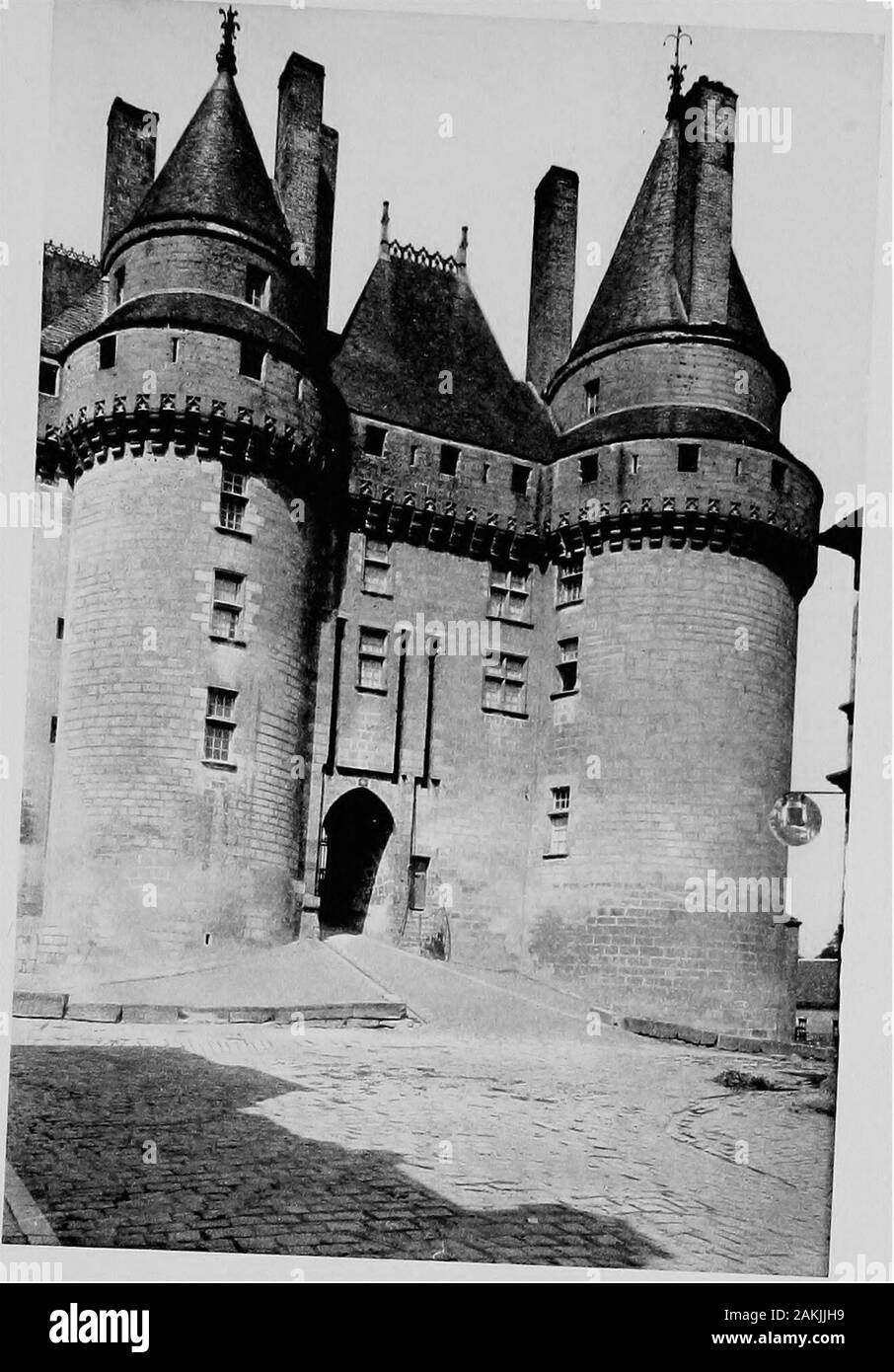Old Touraine; the life and history of the famous chateâux of France . e Roman settlements, and Roman remains arestill traceable in the foundations of the old donjonkeep, rebuilt in looo. Gregory of Tours tells us,too, that St. Martin built a church here, and thepresent edifice contains some of the early worknear the east end, which is triapsal;^ some oldshafts and arches are arranged on the south side soas to form a covered walk externally. But of the buildings within the castle walls, ofwhich distinct traces are still left, the fort built byFoulques Nerra to blockade Eudes at Tours is theold

Image details
Contributor:
The Reading Room / Alamy Stock PhotoImage ID:
2AKJJH9File size:
7.2 MB (373.5 KB Compressed download)Releases:
Model - no | Property - noDo I need a release?Dimensions:
1320 x 1894 px | 22.4 x 32.1 cm | 8.8 x 12.6 inches | 150dpiMore information:
This image is a public domain image, which means either that copyright has expired in the image or the copyright holder has waived their copyright. Alamy charges you a fee for access to the high resolution copy of the image.
This image could have imperfections as it’s either historical or reportage.
Old Touraine; the life and history of the famous chateâux of France . e Roman settlements, and Roman remains arestill traceable in the foundations of the old donjonkeep, rebuilt in looo. Gregory of Tours tells us, too, that St. Martin built a church here, and thepresent edifice contains some of the early worknear the east end, which is triapsal;^ some oldshafts and arches are arranged on the south side soas to form a covered walk externally. But of the buildings within the castle walls, ofwhich distinct traces are still left, the fort built byFoulques Nerra to blockade Eudes at Tours is theoldest. Little but the outer shell of its walls and afew traces of masonry about the windows remain, but from the little hill on which it stands can beobtained the finest view of the inner side of thechateau. The interior court —I quote from ^ Henry Petit, op. cit. 2 In 1118 the Fulk of Anjou who died upon the throne ofJerusalem in 1142, built a chapel at Langeais, and founded acollegiate church for his relics from Palestine. Q^ (Dne Snttatice to hhateau of Joaixaeald. Joangeaid 197 Mrs. Mark Pattison ^— is almost wholly confinedby the buildings around it; the high walls whichdefend it on the outside are cut up at well-guardedangles by massive towers, and pierced at irregularintervals by narrow openings. The whole length iscrowned by heavy machicolated battlements, so thatthe aspect of the exterior is severe, but the faqadewhich looks upon the court is not wanting in ele-gance. Four small towers, each of which containsa spiral staircase, break the monotony of the frontand give access to the different stories. The in-terior space is divided out in the simplest fashion, and the arrangemen|;s adopted on the ground floorcontinue in unvarying repetition tier above tier.But above, along the roof, run no heavy battle-ments; a bold projecting cornice takes their placein surmounting the wall, and over this rises asharply pointed roof, the outline of which is brokenby towers and pierced